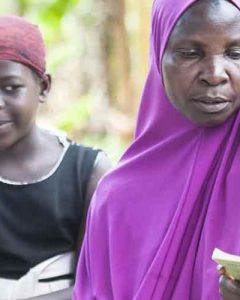 Invest in women: Accelerate progress
Invest in women: Accelerate progress
Achieving gender equality and women’s well-being in all aspects of life is more crucial than ever if we want to create prosperous economies and a healthy planet. However, we are facing a key challenge: the alarming $360 billion annual deficit in gender-equality measures by 2030.
Join us on March 8, 2024, for International Women’s Day under the theme ‘Invest in women: Accelerate progress”, and take a stand with us using the hashtag #InvestInWomen.
Here are five key areas needing joint action:
- Investing in women, a human rights issue: Time is running out. Gender equality is the greatest human rights challenge, benefiting everyone.
- Ending poverty: Due to the COVID pandemic and conflicts, 75 million more people have fallen into severe poverty since 2020. Immediate action is crucial to prevent over 342 million women and girls living in poverty by 2030.
- Implementing gender-responsive financing: Conflicts and rising prices may lead 75% of countries to cut public spending by 2025, negatively impacting women and their essential services.
- Shifting to a green economy and care society: The current economic system disproportionately affects women. Advocates propose a shift to a green economy and care society to amplify women’s voices.
- Supporting feminist change-makers: Despite leading efforts, feminist organizations receive only 0.13% of official development assistance.
This International Women’s Day, let’s unite to transform challenges into opportunities and shape a better future for all!
Did you know?
- In 1984, Australia introduced the world’s first Women’s Budget Statement, paving the way for many others to follow suit.
- There is an alarming lack of financing with a staggering USD 360 billion annual deficit in spending on gender-equality measures.
- Just 5% of government aid is focused on tackling violence against women and girls, and less than 0.2% is directed to its prevention.

 general — are invited to celebrate the World Day for Consecrated Life. Established by St. John Paul II, the day recognizes the beauty and impact of a life dedicated to poverty, chastity, and obedience.
general — are invited to celebrate the World Day for Consecrated Life. Established by St. John Paul II, the day recognizes the beauty and impact of a life dedicated to poverty, chastity, and obedience. Invisible Women, Invisible Problems
Invisible Women, Invisible Problems


 International Day for Disaster Risk Reduction is observed on October 13 every year. The day is a chance to recognize the progress made in addressing vulnerability to disasters and the loss of lives, economies, and health. Every year, the day honors people and communities all over the world who are working to reduce their vulnerability to disasters and raise awareness about the urgency of lowering the dangers they face. Disaster resilience in response to catastrophic weather events and other natural and man-made disasters requires international cooperation in the form of Official Development Aid (ODA) as well as capacity building.
International Day for Disaster Risk Reduction is observed on October 13 every year. The day is a chance to recognize the progress made in addressing vulnerability to disasters and the loss of lives, economies, and health. Every year, the day honors people and communities all over the world who are working to reduce their vulnerability to disasters and raise awareness about the urgency of lowering the dangers they face. Disaster resilience in response to catastrophic weather events and other natural and man-made disasters requires international cooperation in the form of Official Development Aid (ODA) as well as capacity building.

 Poverty, hunger, sadness, hatred from others – who would dare say that these will bring happiness?
Poverty, hunger, sadness, hatred from others – who would dare say that these will bring happiness? The International Day of Charity was conceived as a
The International Day of Charity was conceived as a